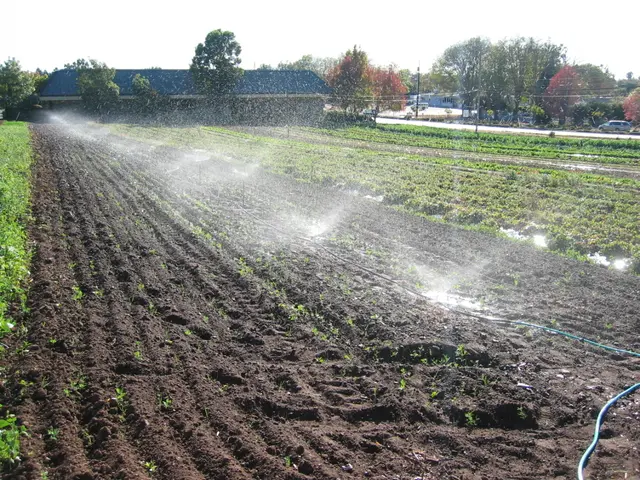Revised USDA Plant Hardiness Zone Mapping: Discover Your Updated Zone for Healthier Gardening
The USDA has recently updated its Plant Hardiness Zone Map, marking the first change in over a decade. This new map, based on data from 13,412 weather stations, provides a more accurate and detailed snapshot of minimum winter temperatures across the United States.
The 2023 update uses more recent 30-year temperature averages (1991–2020) compared to the prior map, resulting in a warmer climate baseline. The map divides the country into 13 hardiness zones, each further divided into "a" and "b" sub-zones.
Approximately half of the nation has shifted to a warmer zone or half-zone in the updated map. For instance, Dallas, Texas, which was previously in zone 8a, has moved to zone 8b. This shift towards warmer zones reflects an average warming of about 2.5 °F (1.4 °C) across the contiguous U.S.
Key differences from previous versions include the warmer climate baseline, more data points, and notable regional variation. The Great Plains and Midwest experienced the most warming and zone shifts, while the Southwest saw little change. The Pacific Northwest may now have longer growing seasons due to milder frost dates.
While some of these zone shifts are consistent with warming trends related to climate change, the USDA cautions that changes also result from improved data and mapping techniques. However, climate scientists expect a northward shift of zones over the long term as global warming continues.
The new map is easy for anyone to use. You can visit the Department of Agriculture webpage to get the latest info on your hardiness zone. To find your hardiness zone, simply enter your zip code on the USDA Plant Hardiness Zone Map website.
When selecting perennials, it's important to choose plants with stated growing zones that include your hardiness zone. For a safer bet, pick perennials with planting zone ranges that are lower than your hardiness zone. For example, a weeping willow (Salix babylonica) has a planting zone of zones 6 through 9.
The updated USDA Plant Hardiness Zone Map is an invaluable tool for gardeners and growers, helping them select plants that will thrive in their evolving local climates. By using this map, you can ensure that the plants you choose will not only survive the winter but also flourish in your garden.
Image Credit: Emerald Coast Growers.
[1] USDA. (2023). 2023 USDA Plant Hardiness Zone Map. Retrieved from https://planthardiness.ars.usda.gov/PHZMWeb/ [2] National Public Radio. (2023). New USDA Plant Hardiness Map Shows Widespread Warming. Retrieved from https://www.npr.org/sections/thetwo-way/2023/12/01/1145187889/new-usda-plant-hardiness-map-shows-widespread-warming [3] The New York Times. (2023). The New USDA Plant Hardiness Map Reflects a Warmer Climate. Retrieved from https://www.nytimes.com/2023/12/01/science/usda-plant-hardiness-map-climate-change.html [4] The Washington Post. (2023). The USDA's New Plant Hardiness Map Shows a Warmer Climate. Retrieved from https://www.washingtonpost.com/climate-environment/2023/12/01/usda-plant-hardiness-map-climate-change/ [5] Climate Central. (2023). The 2023 USDA Plant Hardiness Map: A Warmer, More Data-Rich, and Detailed Snapshot of Minimum Winter Temperatures. Retrieved from https://www.climatecentral.org/news/the-2023-usda-plant-hardiness-map-a-warmer-more-data-rich-and-detailed-snapshot-of-minimum-winter-temperatures
[1] The updated USDA Plant Hardiness Zone Map is a valuable resource for individuals interested in their home-and-garden lifestyle, offering precise details on minimum winter temperatures across the United States.
[2] With the map's new lifestyle implications, it's essential to pay attention to the hardiness zones when selecting plants to ensure their survival and growth in your lifestyle-modified garden.




